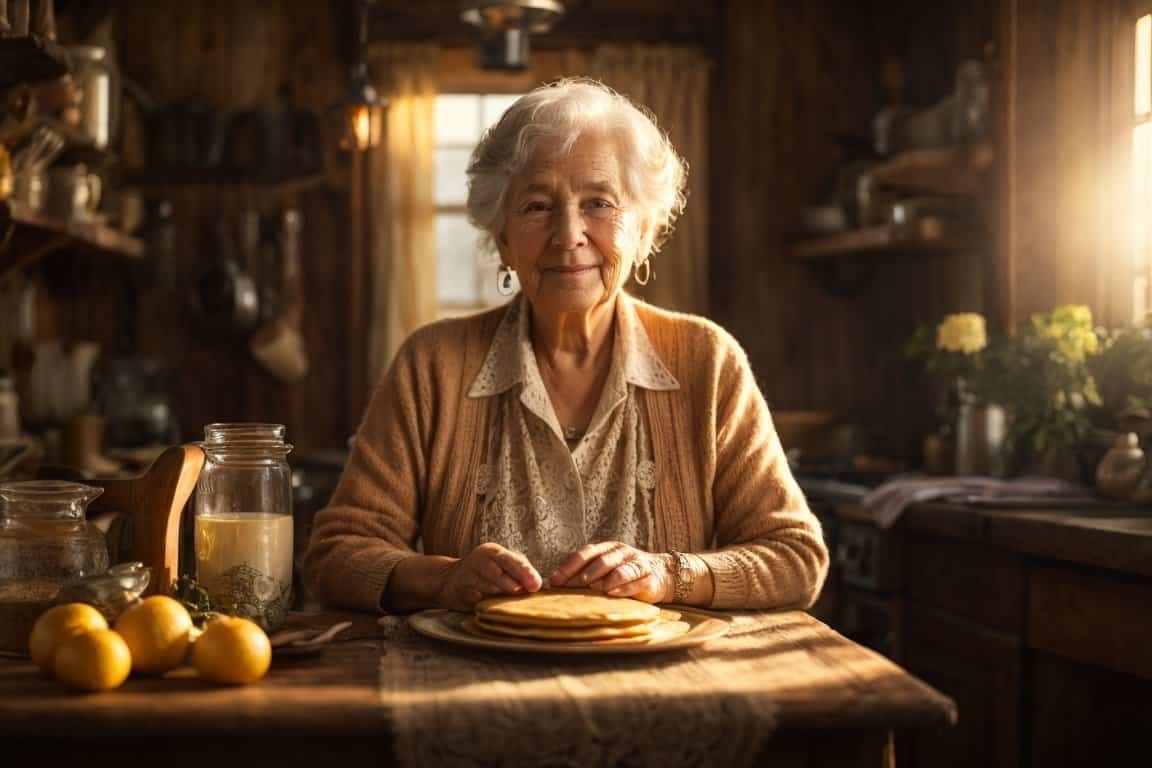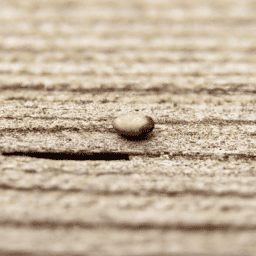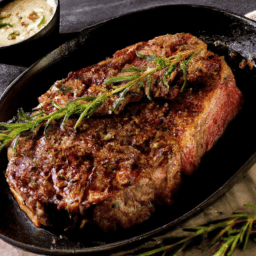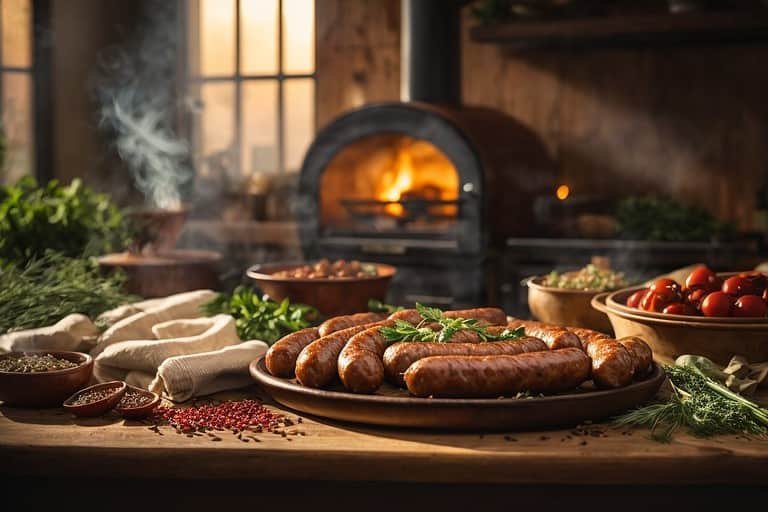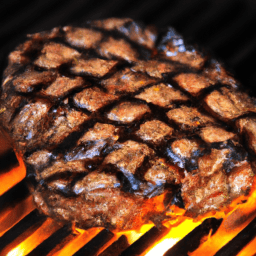Unlock Your Childhood: How To Cook Like Your Grandmother
If your idea of cooking is punching buttons on a microwave or dialing for takeout, it’s time to reconnect with something real, something primal. Ever wish you could conjure up the kitchen magic that made Grandma’s house the place where comfort met flavor in a divine culinary union?
“How To Cook Like Your Grandmother” isn’t just another step-by-step guide; it’s a ticket back in time, a love letter to the food that shaped your very soul. We’re talking heartwarming stews, cookies that smell like childhood, and pies that could defuse family feuds.
So put down that sad, greasy takeout menu. Today, you’re reclaiming your culinary birthright. Brace yourself for a food journey that’ll leave your taste buds dancing and your soul screaming for seconds. This is where nostalgia meets the damn fine art of cooking, just like Grandma used to make. Let’s roll up our sleeves and get dirty.
Understanding Your Grandmother’s Cooking Style
Growing up, your grandmother’s cooking was more than just a way to satisfy your hunger; it was an experience filled with love, tradition, and nostalgia. To truly appreciate and embrace her culinary legacy, it is essential to understand the key elements that made her cooking style unique and memorable.
Keeping the Traditional Flavor Alive
One of the most remarkable aspects of your grandmother’s cooking is her commitment to preserving traditional flavors. She understood the importance of authenticity and refused to compromise on the integrity of her recipes. From the careful selection of ingredients to the meticulous preparation process, every step was aimed at capturing the essence of traditional dishes. By understanding and respecting her dedication to tradition, you can carry forward the legacy of these exquisite flavors.
The Ingredient Quality over Quantity
Your grandmother’s cooking philosophy emphasized the importance of ingredient quality over quantity. She firmly believed that the best dishes were created using the freshest, highest-quality ingredients. Whether it was plump tomatoes from her garden or locally sourced organic produce, she always prioritized quality. By following in her footsteps and seeking out the finest ingredients available, you can ensure that your meals burst with flavor and authenticity.
The Authentic Techniques and Tools
In a world of modern kitchen gadgets, your grandmother’s reliance on authentic techniques and tools set her apart. Whether it was slow-cooking stews on the stovetop or grinding spices using a mortar and pestle, she valued the artistry of traditional methods. By embracing these techniques and utilizing the same tools she did, you pay homage to her legacy and elevate the depth and complexity of your dishes.
The Role of Homegrown and Local Ingredients
A crucial aspect of your grandmother’s cooking style was the use of homegrown and local ingredients. She understood the significance of supporting local farmers and cherished the connection between the earth and her recipes. Homegrown vegetables, herbs, and fruits infused her dishes with a freshness and vibrancy that cannot be replicated. By cultivating your own garden or visiting local farmers’ markets, you can honor her commitment to sustainability while enjoying the unparalleled flavors of locally sourced ingredients.
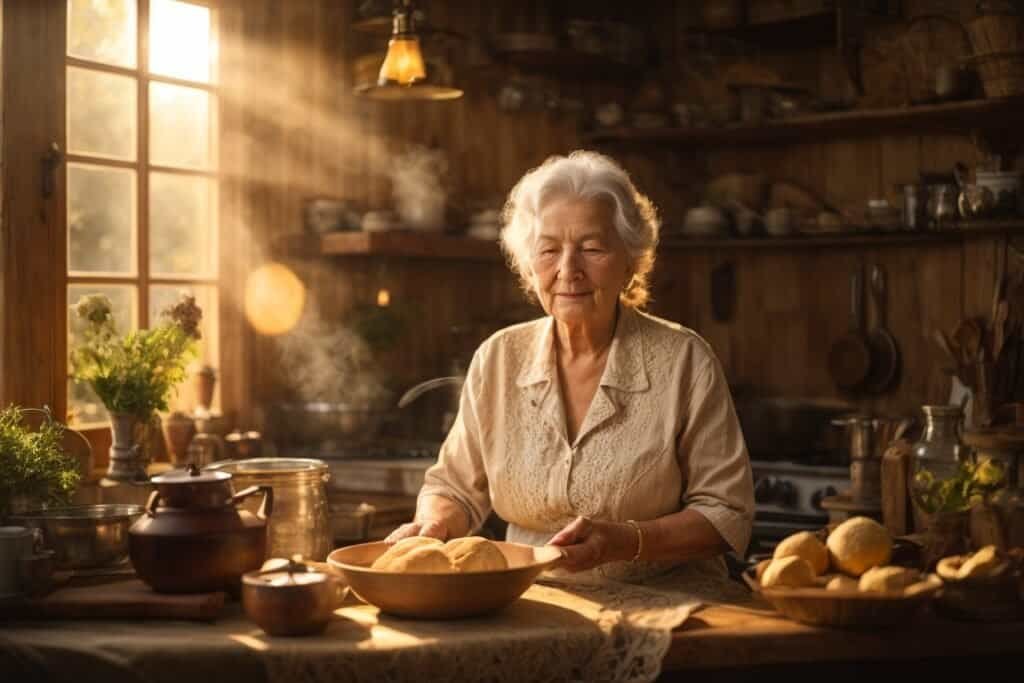
Reliving Childhood Recipes
As you embark on the journey of cooking like your grandmother, it is essential to relive the cherished recipes that defined your childhood. These recipes hold the memories of delicious meals and a glimpse into your family’s history and heritage.
Recalling the Taste and Presentation
Take a moment to close your eyes and transport yourself back to your grandmother’s kitchen. Recall the tantalizing aroma that wafted through the air and the mouthwatering anticipation that filled the room. Remember how she lovingly plated each dish, paying attention to every intricate detail. By vividly recalling the taste and presentation of her recipes, you can strive to recreate these delightful culinary experiences.
Building a Recipe Index
To ensure that your grandmother’s recipes are perpetuated for generations to come, it is vital to build a comprehensive recipe index. Organize her handwritten recipe cards, cookbooks, and any other sources of culinary wisdom she left behind. Categorize the recipes based on their type, such as appetizers, mains, desserts, and beverages. This index will serve as a guide and evoke a sense of nostalgia each time you peruse its pages.
Prioritizing Recipes Based on Frequency and Special Occasions
While every recipe holds its significance, it is essential to prioritize ones prepared often or reserved for special occasions. These recipes hold a deeper sentimental value and often embody the essence of your grandmother’s cooking style. By mastering these dishes first, you can carry forward the family traditions and showcase the true essence of her culinary prowess.
10 Nostalgic Recipes That Will Take You Back to Grandma’s Kitchen
- Grandma’s Fluffy Pancakes with Blueberry Compote – A breakfast game-changer that combines the richness of boiled eggs with creamy avocado and a kick of homemade chili oil.
- Grandma’s Chicken Pot Pie – The ultimate comfort food, Grandma’s chicken pot pie was the stuff of legends.
- Grandma’s Meatloaf – A dish so simple, yet so full of love and flavor.
- Grandma’s Biscuits and Gravy – Nothing says “Good morning, sunshine!” like Grandma’s biscuits and gravy.
- Grandma’s Apple Pie – The crown jewel of Grandma’s kitchen, her apple pie was a slice of heaven.
- Grandma’s Stuffed Bell Peppers – Stuffed bell peppers were Grandma’s way of making vegetables exciting.
- Grandma’s Tuna Casserole – The ultimate comfort food, Grandma’s tuna casserole was always a hit.
- Grandma’s Cornbread – No family gathering was complete without Grandma’s cornbread.
- Grandma’s Beef Stew – Grandma’s beef stew was the epitome of soul food.
- Grandma’s Rice Pudding – A sweet ending to any meal, Grandma’s rice pudding was the dessert that everyone looked forward to.
For the full recipes and cooking instructions, click on the recipe titles. Prepare to take a trip down memory lane!
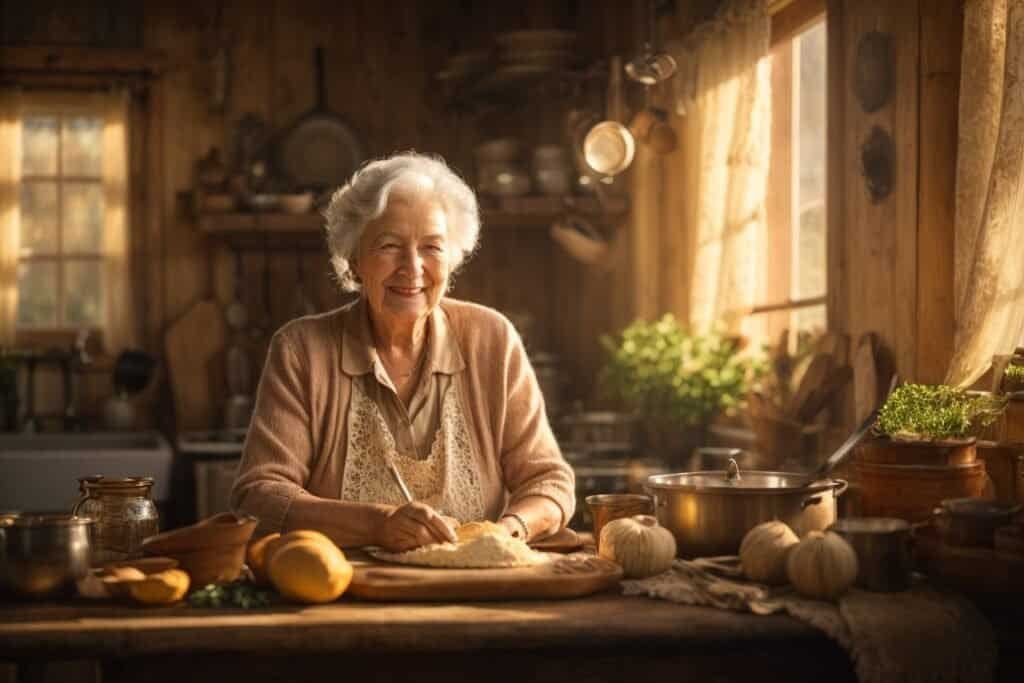
Procuring the Right Ingredients
As you embark on your culinary journey, procuring the right ingredients is paramount. Your grandmother’s cooking was rooted in the belief that quality ingredients lay the foundation for incredible flavors.
Understanding the Importance of Fresh, Quality Ingredients
Your grandmother lived by the mantra that the quality of your ingredients directly impacts the quality of your dishes. To truly cook like her, it is vital to understand the importance of fresh, quality ingredients. Seek out local farmers’ markets or consider starting your own garden to ensure a steady supply of the finest produce. Freshly ground spices and herbs will elevate the taste of your dishes, just as your grandmother intended.
Sourcing from Local Markets
Supporting local farmers and artisans was fundamental to your grandmother’s cooking philosophy. To honor her legacy, make a conscious effort to source ingredients from local markets. Not only does this support the local economy, but it also ensures that you use the freshest and most seasonally relevant ingredients. Rediscover the joy of browsing through stalls piled high with vibrant fruits, vegetables, and artisanal products – just as your grandmother did.
Substitutes for Rare or Old-Fashioned Ingredients
In some cases, you may encounter recipes that call for rare or old-fashioned ingredients that are no longer readily available. Rather than feeling discouraged, embrace your grandmother’s resourcefulness and find suitable substitutes. Research alternative ingredients and experiment with different combinations to replicate the flavors and textures you remember. Your grandmother would have appreciated your dedication to preserving her recipes, no matter the ingredient hurdles.

Mastering Old-Fashioned Cooking Techniques
To truly cook like your grandmother, embracing the art of old-fashioned cooking techniques is crucial. These techniques embrace the essence of traditional cuisine and are integral to recreating the flavors and textures you hold dear.
Learning the Art of Slow Cooking
Your grandmother knew that the secret to unlocking deep, complex flavors rested in the gentle embrace of slow cooking. Embrace this time-honored technique and allow your dishes to simmer and stew, coaxing out flavors that cannot be rushed. Invest in a heavy-bottomed pot or a slow cooker to master this art and recreate the dishes that held you spellbound as a child.
Preserving Food the Old Way
Canning, pickling, and preserving were staples of your grandmother’s culinary repertoire. Embrace her commitment to reducing waste and preserving the bounties of each season by learning these techniques yourself. Carefully craft homemade preserves, pickles, and sauces to enjoy throughout the year. This will allow you to relive the taste of your grandmother’s cooking and connect you to a time when seasonal ingredients were treasured and enjoyed year-round.
Getting Hands-On: Kneading, Stirring, Grinding
Your grandmother’s hands were her most valuable tools in the kitchen. Embrace the tactile experience of kneading dough, stirring sauces, and grinding spices. By getting hands-on with your cooking, you not only connect with the legacy of your grandmother but also infuse your dishes with a quality that cannot be replicated by machines. Feel the ingredients as you work with them, and let your intuition guide you – just as your grandmother did.
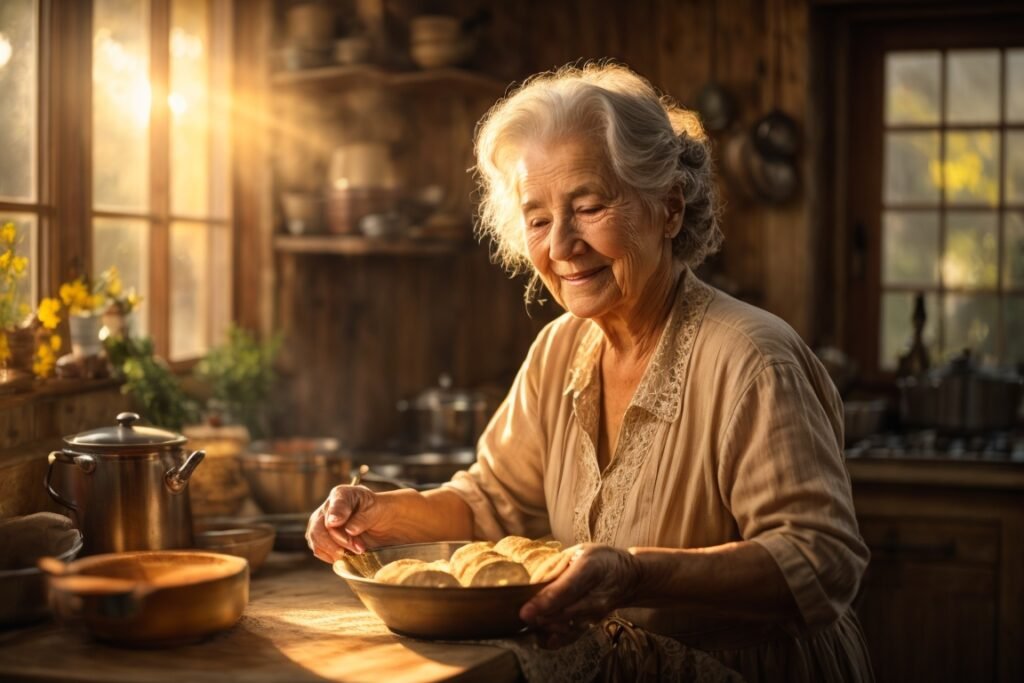
Decoding Family Recipes
Family recipes are often handed down through generations, creating a tapestry of culinary traditions. Decoding these treasured recipes ensures that their legacy lives on and that you can continue to delight in their flavors.
Transcribing Old Recipe Cards
Many family recipes are passed down on fragile, stained recipe cards, holding decades of culinary wisdom. Take the time to carefully transcribe these recipes onto paper or into a digital format to preserve them for future generations. This act of love ensures the longevity of your family’s culinary heritage and allows you to better understand the measurements and techniques that were second nature to your grandmother.
Understanding Unusual Measurements or Techniques
As you delve into the world of family recipes, you may encounter unfamiliar measurements or techniques. Embrace these quirks and take the time to understand their significance. Reach out to older family members or consult culinary references from the same era to gain insight into these unique aspects of your grandmother’s recipes. By deciphering these little mysteries, you unlock the true essence of her dishes.
Identifying Secret Ingredients or Methods
Every family has its culinary secrets – that special ingredient or technique that sets their dishes apart. While your grandmother may not have openly shared these secrets, they may be hidden within her recipes. Dive deep into each recipe, analyzing the flavors and techniques used. Experimentation and curiosity will be your faithful companions as you embark on the quest to identify and recreate these hidden gems.
Picking the Right Cookware and Tools
Just as your grandmother relied on specific cookware and tools, choosing the right ones to recreate her magic is essential. These tools enhance the cooking process and ensure that your dishes are as authentic as possible.
Guide to Untreated Cast Iron and Aluminum Cookware
Your grandmother’s trusted cast iron skillets and aluminum pots were seasoned with time and experience. Embrace their legacy by investing in untreated cast iron and aluminum cookware. These materials offer excellent heat distribution and retention, allowing you to achieve the same results your grandmother did. With proper care and maintenance, these pieces will become cherished heirlooms that can be passed down to future generations.
Wooden Spoons, Rolling Pins, and More
Just as they say a painter’s brush is an extension of their hand, so are the tools you use in the kitchen. Embrace the simplicity and authenticity of wooden spoons, rolling pins, and other handcrafted utensils. These tools connect you to your grandmother’s cooking style on a tactile level and imbue your dishes with a rustic charm. Seek out local artisans or vintage stores to find these treasures that will become an integral part of your cooking experience.
How Tools Influence the Cooking Process
It is important to note that your tools and cookware can significantly influence the cooking process. Each utensil has its own unique characteristics, such as conductivity and durability, that impact the taste and texture of your dishes. By understanding how these tools work, you can harness their full potential and unlock the secrets of your grandmother’s recipes. Experiment with different tools and pay attention to the subtle differences they bring to each dish.
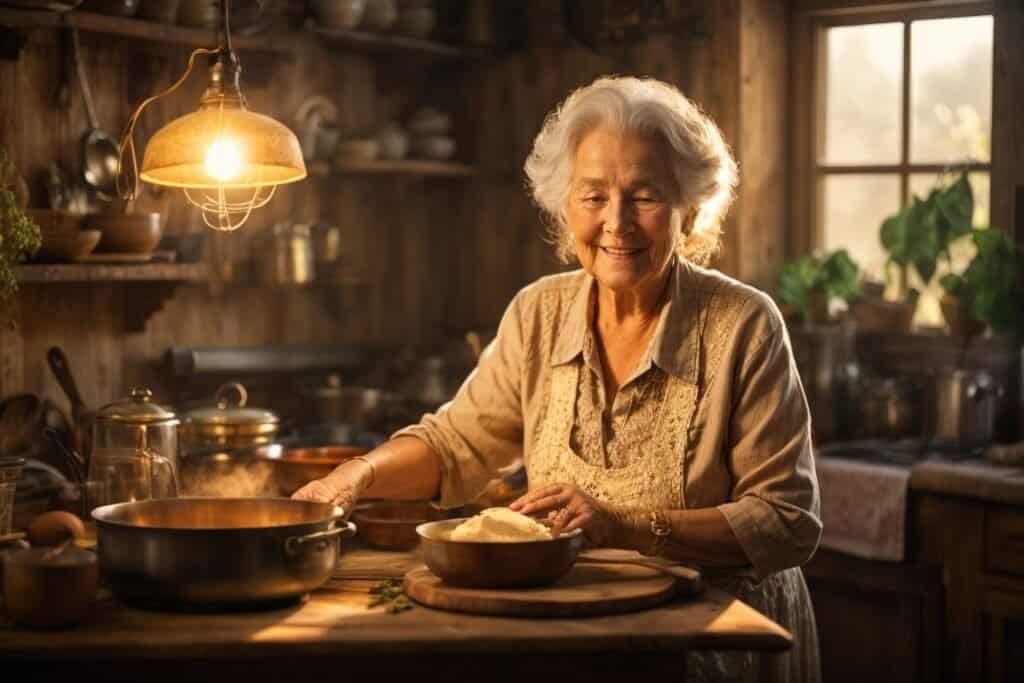
Observing the Cooking Process
While recipes and techniques are essential, observing your grandmother’s cooking process adds an invaluable layer of understanding. Invite her to a cooking session, actively participate, and take notes to capture the essence of her culinary genius.
Inviting Your Grandmother to a Cooking Session
What better way to unlock the secrets of your grandmother’s cooking than by inviting her into your kitchen? Spend precious moments together, recreating her beloved recipes, and observing her as she gracefully moves through the kitchen. The intangible knowledge and wisdom she imparts during these sessions are irreplaceable and ensure that her cooking style lives on through your generations.
Actively Participating and Taking Notes
As you cook alongside your grandmother, actively participate in each step of the process. Take notes on the techniques she employs, how she judges flavor balance, and the little tweaks she makes along the way. These seemingly insignificant details will prove invaluable as you strive to recreate her dishes independently. By immersing yourself in the process, you better understand your grandmother’s cooking style and the nuances that made her dishes so remarkable.
Asking Relative Questions
Conversation plays a vital role in understanding your grandmother’s cooking style. Use this opportunity to ask her about her favorite ingredients, influences, and memories associated with specific recipes. Open up a dialogue that transcends the boundary of the kitchen and delve into the stories and experiences that influence her culinary choices. These conversations strengthen your bond and provide a wealth of knowledge that cannot be found in cookbooks.
Making Family Heirlooms
Embarking on the journey to cook like your grandmother is not simply about replicating her dishes; it is about creating family heirlooms that you can pass down to future generations. By mastering her signature recipes, you ensure that her culinary legacy lives on.
Baking Bread from Scratch
Few things evoke the warmth and comfort of home like the aroma of freshly baked bread. Mastering your grandmother’s bread recipe is a tangible way to carry forward her legacy. Knead the dough with love, allow it to rise under a warm cloth, and savor the moment when each loaf emerges from the oven. From crusty artisanal bread to soft, pillowy rolls, every batch will be a reflection of your grandmother’s nurturing spirit and undying love.
Preparing Homemade Pickles and Preserves
Preserving the bounty of each season is a sustainable practice and a beautiful way to honor your grandmother’s cooking style. Gather the freshest cucumbers, beets, or cabbage, and follow her cherished pickle or preserve recipes. Allow the flavors to meld and develop over time, and savor each jar as it unveils the familiar taste of your grandmother’s dedication to each batch. These homemade delicacies will add a touch of nostalgia to your meals and serve as a tangible link to your grandmother’s culinary prowess.
Creating Grandmother’s Signature Dishes
Every grandmother has her signature dishes, those culinary creations that were uniquely hers. These dishes embody her individuality and showcase her mastery in the kitchen. By recreating these signature dishes, you perpetuate her legacy and honor her singular cooking style. Whether it is her famous apple pie, her secret family chili recipe, or a dish that originated in her country of origin, these creations become a tangible link to your past and a gift to future generations.
Practicing and Tweaking Recipes
While your grandmother’s recipes are cherished treasures, embracing the art of experimentation and iteration to achieve perfection is essential.
Iterations for Perfection
Your grandmother’s cooking journey was one of continuous improvement and refinement. Embrace this same mindset and approach each recipe as an opportunity for growth. To enhance the flavors, experiment with subtle tweaks, such as adjusting seasonings or cooking times. Prepare the same recipe multiple times, noting the changes and improvements along the way. Each iteration brings you closer to the perfection your grandmother strived to achieve.
Dealing with Failed Attempts
Cooking, like any other creative endeavor, comes with occasional failures. Accept these failures as valuable learning experiences and opportunities for growth. Your grandmother would have encouraged resilience and resourcefulness in the face of disappointment. Analyze failed attempts, identify areas for improvement, and view them as stepping stones on your path to becoming a master of her dishes.
Experimenting to Update Old Recipes
While preserving tradition is crucial, your grandmother would have applauded your curiosity and desire to put your own spin on her recipes. Experimentation is the key to breathing new life into old recipes. Explore different flavors, swap ingredients, or add modern twists to create something entirely unique yet rooted in your grandmother’s culinary legacy. By experimenting with old recipes, you pay homage to tradition and ensure that it evolves and remains relevant to the tastes of future generations.
Sharing the Cooking Legacy
Cooking like your grandmother is a personal endeavor and an opportunity to share her culinary legacy with the world. By passing down her cooking style and recipes, you ensure that future generations can delight in the flavors and traditions that shaped your upbringing.
Teaching the Art of Home Cooking to Next Generation
Your grandmother’s cooking style was crafted through years of experience and a deep love for nourishing others. Pass on this art of home cooking to the next generation, whether it be your children, nieces and nephews, or friends. Gather them in the kitchen, share stories and techniques, and inspire them to carry your grandmother’s culinary legacy forward. By teaching others to cook like your grandmother, you ensure that her flavors and techniques live on for years to come.
Building Family Traditions Around the Dinner Table
Food has an incredible ability to bring people together, creating a sense of belonging and unity. Build family traditions around the dinner table that honor your grandmother’s cooking style. Share weekly meals with loved ones, celebrate special occasions with her signature dishes, and create memories that will be cherished for generations. In doing so, you pay tribute to your grandmother’s love for food and cultivate a sense of togetherness and connection that will endure through time.
Creating a Family Recipe Book
While handwritten recipe cards hold a special place in your heart, compiling a family recipe book ensures that your grandmother’s culinary legacy is accessible to all. Gather her cherished recipes, along with any accompanying anecdotes or stories, and create a beautifully curated recipe book. Include photos, handwritten notes, and personal reflections to make it a true treasure trove of family history. Each time you open its pages, you’ll be transported back to your grandmother’s kitchen, surrounded by love and the unmistakable aromas of her extraordinary cooking.
In conclusion, cooking like your grandmother is more than just following recipes and techniques; it is an act of love and preservation. You can carry forward her culinary legacy by understanding her cooking style, reliving childhood recipes, procuring the right ingredients, embracing old-fashioned techniques, and decoding family recipes. Take the time to observe, experiment, and share her cooking with others, and you will create a family treasure that will be passed down through generations. So step into the kitchen, roll up your sleeves, and embark on your journey to cooking like your grandmother – for her, for yourself, and for the generations to come.

